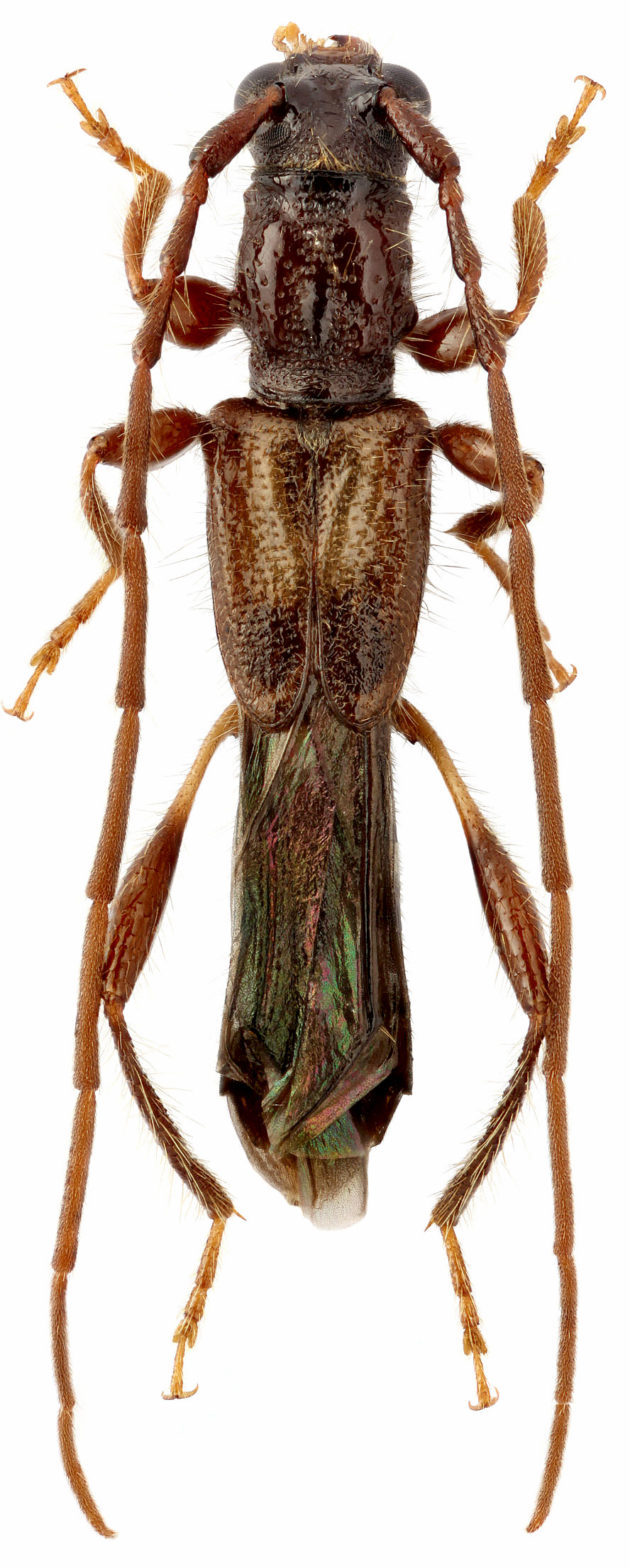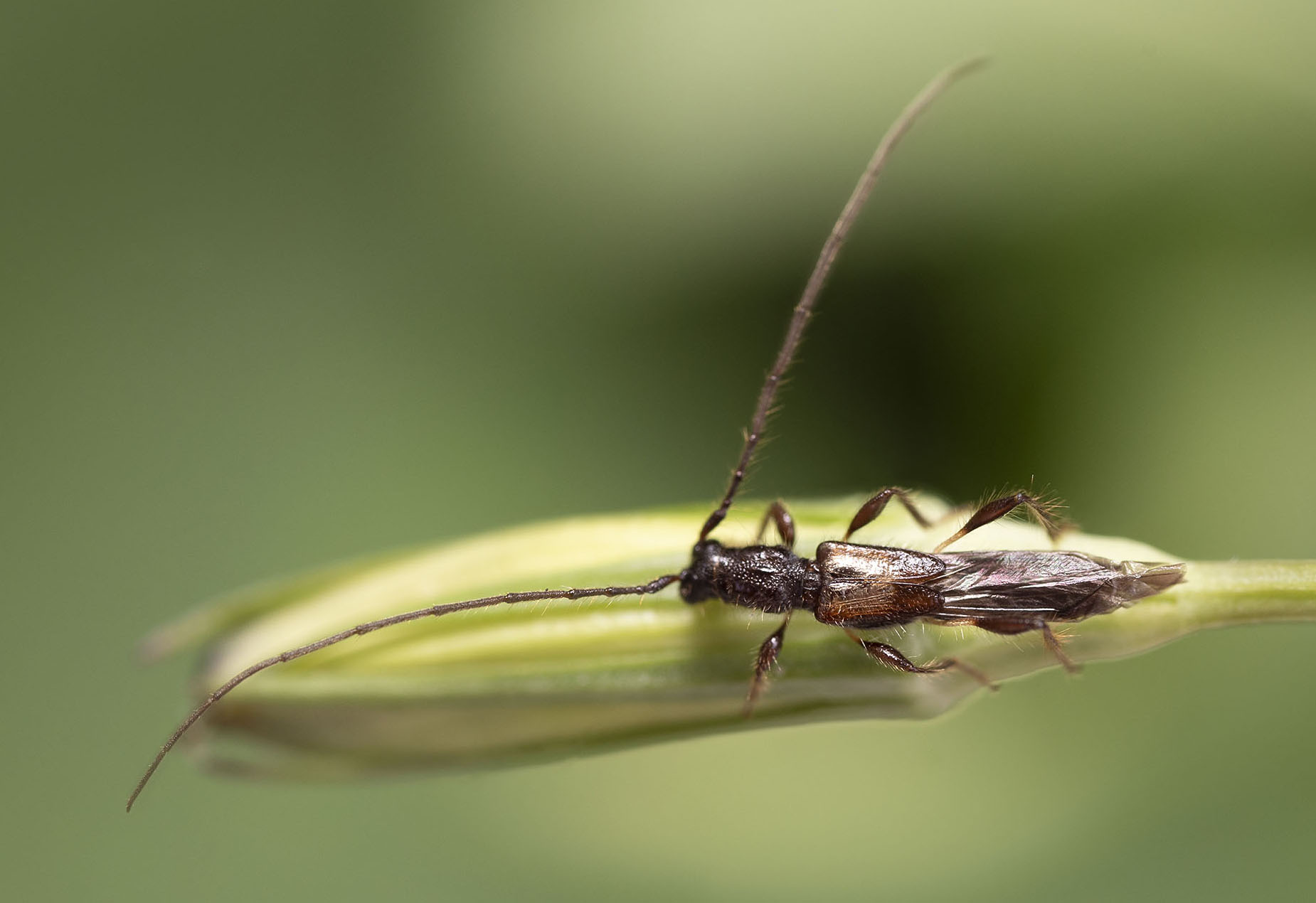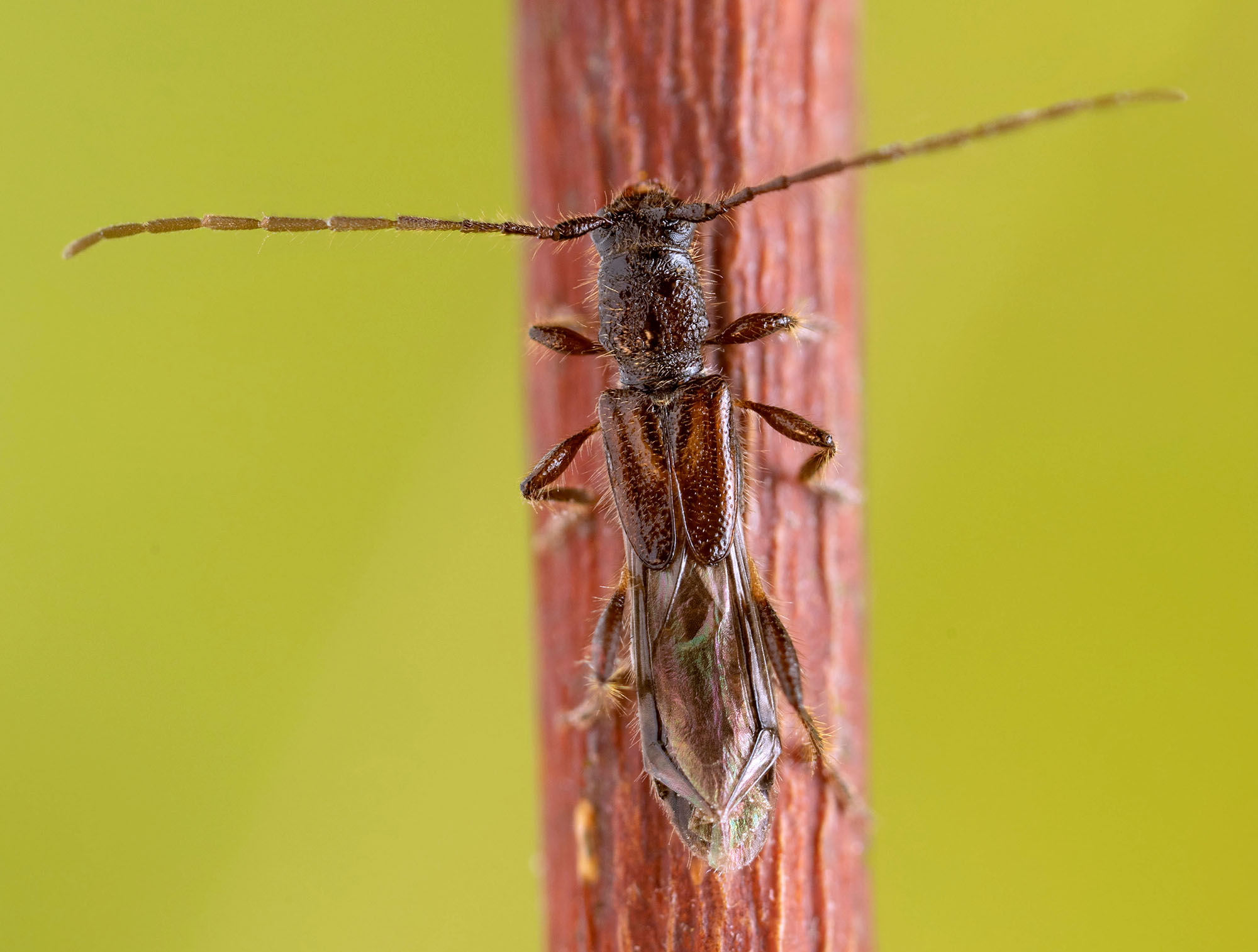Molorchus umbellatarum umbellatarum, a relatively common taxon with a large area of occurrence from the Atlantic coast to Iran,
has been described as Necydalis umbellatarum from Germany by Johann Christian Daniel Schreber in 1759 [▽].
Larvae develop first under the bark and later in the wood of dead thin twigs of various deciduous trees and shrubs.
The larvae overwinter in hook-shaped pupal cell in created in the wood, pupation in spring, life-cycle 2 years. Adults,
active from April to July (peak in May-June), are diurnal and anthophilous but can be also beaten from dying/dead twigs of the host plants.
| Body length: | 5 - 9 mm |
| Life cycle: | 2 years |
| Adults in: | April - July |
| Host plant: | polyphagous in deciduous trees and shrubs (Cornus, Euonymus, Prunus, Rosa, Sorbus, Cydonia,
Viburnum, Malus, Rubus, Amelanchier, Castanea, etc.) |
| Distribution: | Europe, Caucasus, Transcaucasia, Near East, Iran |
The depicted mounted male beetle was collected in Fanagoriyskoye (Фанагорийское) village environs (Goryachy Klyuch district, Krasnodar Krai, Southern Federal District, Russia)
on May 19, 2012. The living beetle were: ♂ - collected in Agioi Theodoroi (Άγιοι Θεόδωροι) village environs (Grevena municipality, Grevena regional unit, West Macedonia, Greece) on May 18, 2022;
♀ - reared from larva found in Pouzdřany environs (Břeclav district, South Moravia, Czechia) in January 2021.
Collected by Maxim E. Smirnov and Daniel Rydzi
[▽]
Schreber J.Ch.D.:
Novae species Insectorum.
Schneider, Halae, 16pp, 1759.
[download  ]
]
[✧]
Sláma M.E.F.:
Tesaříkovití – Cerambycidae České republiky a Slovenské republiky / Cerambycidae of the Czech Republic and Slovak Republic.
Milan Sláma private printing, Krhanice, 383pp [pages 121-122], 1998 [ISBN: 80-238-2627-1].
[download  ]
]




